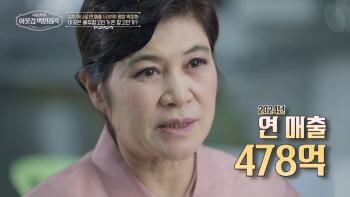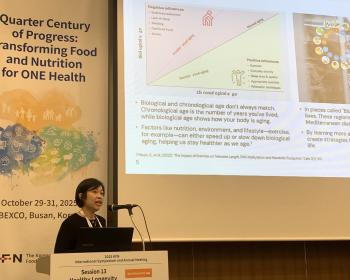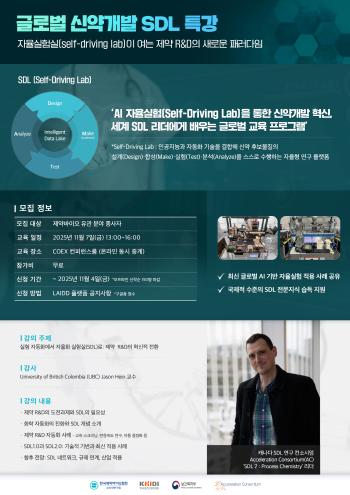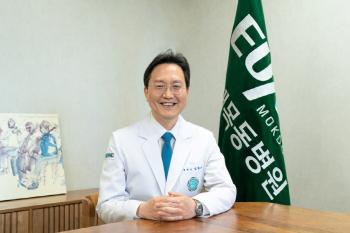Severe liver rupture trauma, saved by Dr. Car at trauma center on the road
Apr 14, 2025
A patient whose liver was severely ruptured and almost died in a car accident recovered his health and was discharged from the hospital due to the activities of "Dr. Car". Doctor Car is the first system introduced by Incheon Metropolitan City and Gachon University Gil Hospital in 2019 as a trauma center on the road that increases the survival rate of severely injured patients by boarding an ambulance.
A woman in her 60s, identified only by her surname Shin, was in a car accident on a road in Gyeyang-gu, Incheon, on the afternoon of March 24. The bus that was turning left in the opposite lane collided head-on with the vehicle that Shin was driving. The accident left him with multiple chest fractures and a severe liver rupture. He was transferred to a nearby hospital, but lacked treatable personnel and facilities. The hospital immediately asked the regional trauma center of Gachon University Gil Hospital whether it was possible to treat patients.
Lee Gil-jae, a professor of trauma surgery who was on duty, decided to dispatch the doctor car after judging that the patient could cause shock during transportation. Before his departure, he received the video data of the hospital to check the degree of liver damage of the patient, and called Professor Hwang Jeong-han of the Department of Radiology, who is in charge of emergency embolization, for rapid hemostasis. Starting the transfer, the hospital was asked for blood transfusion and central venous tube insertion.
After arriving at Gachon University Gil Hospital, Shin was immediately transferred to the procedure room to start embolization. After being asked to leave the hospital, he recovered in about an hour and was discharged from the hospital in 10 days without any major aftereffects. He thanked the medical staff for making prompt decisions and saving his life.
Professor Lee Gil-jae said, `At the time of the accident, about half of the liver was damaged and bleeding was severe, and if it had been delayed for a little while, the consciousness would have been lost and shocked.' `The most important thing is how quickly hemorrhagic severe trauma patients stop bleeding, and with the support of the Regional Trauma Center and the Incheon Metropolitan Government, the doctor car system could save precious lives", he explained.
Doctor Car is operated in the form of trauma specialists, nurses, and first responders being dispatched to the site to transport and treat trauma patients. Incheon City and Gachon University Gil Hospital began operation in March 2019 for the first time in the country. It is meaningful to solve the medical gap in the ambulance when severe trauma occurs due to fire, explosion, traffic accident, industrial accident, etc. The ultimate goal is to lower the 'preventable mortality rate' that would not have died if appropriate treatment had been received within golden time.
Dr. Carr has conducted 121 dispatches and 394 medical guidance over the past six years. A trauma specialist determines the patient's condition, determines which method is more effective between ambulance transport and doctor's car transportation, and decides whether to be dispatched. In 2022, when a factory worker's arm got stuck in a shredder, it took a lot of time for 119 to separate the machine from the patient, and the trauma team dispatched to the scene with a doctor car to perform a amputation at the scene to save the patient's life.
The Incheon Regional Trauma Center, including Dr. Car, has been focusing on treating trauma patients, including severe trauma patients, for more than 10 years since it opened for the first time in the country in 2014. More than 2,000 trauma patients are treated every year, and among them, about 800 severe trauma patients with a severity score (ISS) of 15 points or more per year. Prior to the establishment of the regional trauma center, the preventable mortality rate in Korea reached about 35%, but since the opening of the regional trauma center nationwide, it has decreased to 13%, and the preventable mortality rate at Gachon University Gil Hospital's regional trauma center is at the lowest level in the country at 6%.
Along with Dr. Kaka, Gachon University Gil Hospital has been operating the first doctor helicopter in Korea since 2011. Emergency medical specialists are operating doctor helicopters that are dispatched to the site for the first time in Korea, creating synergy with Dr.Ka, which has good access to urban areas.
Kim Woo-kyung, head of Gachon University Gil Hospital, said, `Despite various difficulties in the medical community, Gachon University Gil Hospital is playing a role as a final-stage medical institution in the community thanks to the mission and efforts of the medical staff to treat and save even one more seriously ill patient"We will continue to do our best to protect the lives and health of citizens by organically cooperating with related agencies."."
A woman in her 60s, identified only by her surname Shin, was in a car accident on a road in Gyeyang-gu, Incheon, on the afternoon of March 24. The bus that was turning left in the opposite lane collided head-on with the vehicle that Shin was driving. The accident left him with multiple chest fractures and a severe liver rupture. He was transferred to a nearby hospital, but lacked treatable personnel and facilities. The hospital immediately asked the regional trauma center of Gachon University Gil Hospital whether it was possible to treat patients.
Lee Gil-jae, a professor of trauma surgery who was on duty, decided to dispatch the doctor car after judging that the patient could cause shock during transportation. Before his departure, he received the video data of the hospital to check the degree of liver damage of the patient, and called Professor Hwang Jeong-han of the Department of Radiology, who is in charge of emergency embolization, for rapid hemostasis. Starting the transfer, the hospital was asked for blood transfusion and central venous tube insertion.
After arriving at Gachon University Gil Hospital, Shin was immediately transferred to the procedure room to start embolization. After being asked to leave the hospital, he recovered in about an hour and was discharged from the hospital in 10 days without any major aftereffects. He thanked the medical staff for making prompt decisions and saving his life.
Professor Lee Gil-jae said, `At the time of the accident, about half of the liver was damaged and bleeding was severe, and if it had been delayed for a little while, the consciousness would have been lost and shocked.' `The most important thing is how quickly hemorrhagic severe trauma patients stop bleeding, and with the support of the Regional Trauma Center and the Incheon Metropolitan Government, the doctor car system could save precious lives", he explained.
Doctor Car is operated in the form of trauma specialists, nurses, and first responders being dispatched to the site to transport and treat trauma patients. Incheon City and Gachon University Gil Hospital began operation in March 2019 for the first time in the country. It is meaningful to solve the medical gap in the ambulance when severe trauma occurs due to fire, explosion, traffic accident, industrial accident, etc. The ultimate goal is to lower the 'preventable mortality rate' that would not have died if appropriate treatment had been received within golden time.
Dr. Carr has conducted 121 dispatches and 394 medical guidance over the past six years. A trauma specialist determines the patient's condition, determines which method is more effective between ambulance transport and doctor's car transportation, and decides whether to be dispatched. In 2022, when a factory worker's arm got stuck in a shredder, it took a lot of time for 119 to separate the machine from the patient, and the trauma team dispatched to the scene with a doctor car to perform a amputation at the scene to save the patient's life.
The Incheon Regional Trauma Center, including Dr. Car, has been focusing on treating trauma patients, including severe trauma patients, for more than 10 years since it opened for the first time in the country in 2014. More than 2,000 trauma patients are treated every year, and among them, about 800 severe trauma patients with a severity score (ISS) of 15 points or more per year. Prior to the establishment of the regional trauma center, the preventable mortality rate in Korea reached about 35%, but since the opening of the regional trauma center nationwide, it has decreased to 13%, and the preventable mortality rate at Gachon University Gil Hospital's regional trauma center is at the lowest level in the country at 6%.
Along with Dr. Kaka, Gachon University Gil Hospital has been operating the first doctor helicopter in Korea since 2011. Emergency medical specialists are operating doctor helicopters that are dispatched to the site for the first time in Korea, creating synergy with Dr.Ka, which has good access to urban areas.
Kim Woo-kyung, head of Gachon University Gil Hospital, said, `Despite various difficulties in the medical community, Gachon University Gil Hospital is playing a role as a final-stage medical institution in the community thanks to the mission and efforts of the medical staff to treat and save even one more seriously ill patient"We will continue to do our best to protect the lives and health of citizens by organically cooperating with related agencies."."
|
This article was translated by Naver AI translator.














